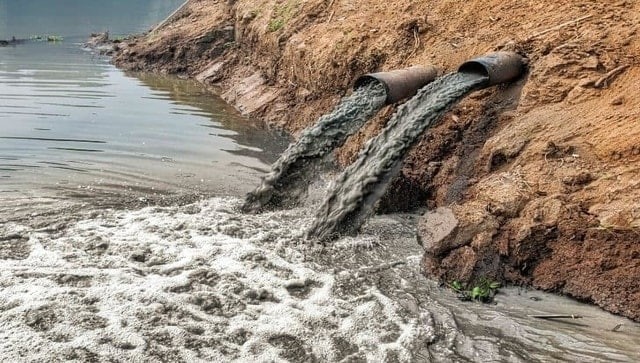By Arvind Raman and Vineet Gupta | Financial Express | February 17, 2021

India and the world need more engineering graduates, with unique competencies. For that, we need a new playbook for engineering education
Engineering and engineers in India have been a force to reckon with, and rightly so. But, as they say, the only thing constant is change. The state of engineering and technology education in India too must change and evolve with the changing times. Reports suggest that a large percentage of the 1.3 million engineers graduating annually in India are unemployable. Engineering seats in many colleges remain unfilled. Last year, the AICTE decided not to grant permission to any new affiliated engineering college. On the other hand, we are all acutely aware that technology is the new language of the world and is impacting every sphere of our lives. One might imagine that we need more technology education, not less. How can we reinvent engineering and technology education in India and what can we learn from institutions globally? With a gross enrolment ratio of only 26% in higher education, India needs many new universities to provide higher education to its very young population.
In 2008, the US National Academy of Engineering (NAE) convened some of the most accomplished engineers and scientists around the world to propose 14 grand challenges for engineers to solve so that humanity might thrive on a healthy planet Earth through the 21st century and beyond. Since then, the NAE’s grand challenges for engineering have inspired the engineering profession to think big and tackle some of the world’s most wicked challenges — such as to engineer better medicines, secure cyberspace, manage the nitrogen cycle, make solar energy economical, or provide access to clean drinking water.
The 17 United Nations Sustainable Development Goals (SDGs) are also complex global grand challenges awaiting the next generation of engineers. The first among them is the elimination of poverty. As Nelson Mandela said, “Like slavery and apartheid, poverty is man-made, and it can be overcome and eradicated by the actions of human beings.” Engineers and engineering ingenuity are playing a key role in the eradication of poverty. Examples include low-cost income-boosting technologies for small holder farmers, improving maternal and child health through point-of care diagnostics in rural areas, and empowering impoverished communities to use renewable energy and ensure their own clean drinking water supplies.
India has its own grand challenges whether access to healthcare, improving learning outcomes in Indian primary education, finding a cheap and sustainable replacement for plastic, improving efficiencies of the food supply chain, building a strong manufacturing economy to support livelihoods, securing our cyberspace or ensuring clean drinking water for everyone.
There are three important ways that the grand challenges for engineering can have a major impact on engineering education. First, the grand challenges are the guiding ‘north star’ for the profession, reminding engineers that no matter what the disruptive technology du jour is, they need to keep a focus on how these technologies can be used to tackle these grand challenges.
Secondly, grand challenges shatter the silos of traditional engineering disciplines. Economical solar energy might require the materials or chemical engineer to design the new high efficiency photovoltaic material, the electrical and computer engineer for integrated electronics, sensors and grid integration, the computer scientist to design algorithms that run solar power plants efficiently, the mechanical engineer for the manufacturing, the civil engineer to integrate solar cells and energy systems into buildings, and the biological engineer to use bio-inspired ideas to make solar cells more effective. Decades-old siloed knowledge in these disciplines converges together as multidisciplinary engineering approaches are needed to tackle these challenges. Institutions are being forced to think how they can collapse the traditional boundaries of engineering disciplines to make engineering education interdisciplinary.
Thirdly, solving the grand challenges requires a deep understanding of culture, politics, business and entrepreneurship and partnerships with civic society and private sector so that technological solutions are actually scaled up and adopted by the society. Engineers need to be able to interact closely with sociologists, anthropologists, gender and cultural specialists, behavioural economists, policy experts, private sector, and above all closely partner with communities to ensure that solutions are human-centric, in line with cultural norms and economically and environmentally sustainable. To design for society, engineers will need to understand society and engineering education in some sense is incomplete without an understanding of society. Integrating social sciences, humanities and entrepreneurship in the engineering curriculum is hence imperative.
For India, the grand challenge approach to engineering education has the potential to pay rich dividends. It makes engineering curriculum interdisciplinary, integrates it strongly with the liberal arts and graduates a new generation of students who can innovate to solve problems and hence be relevant and ‘employable’. This not only helps create an ecosystem for innovation and entrepreneurship, but also helps solve some of our toughest societal challenges.
The NAE’s grand challenge scholar programme has been taken up by many universities as a way for students to acquire multidisciplinary teaming skills while better understanding human society. Still, traditional universities have limited ability to pivot and provide such experiences for all their engineering students. Greenfield institutions have the potential to adopt the grand challenge approach as a part of their DNA and build new education pedagogies ground-up. However, this will require such institutions to think differently on all dimensions — what curriculum they build, how they recruit and train faculty, and how they impart knowledge and skills.
The post-Covid-19 world will accelerate the pace of digital transformation. To help navigate this new world, India and the world will need more engineering graduates, not less. The premium on technology talent is going to be higher, not lower. Every engineer will be more employable than before. However, these graduates will fundamentally need different competencies and need to be educated differently: A broad-based study of interdisciplinary contemporary technologies and society, and the mindset to deal with uncertainty, to innovate, to self-reflect and to collaborate. We need a new playbook for engineering education.
Raman is executive associate dean of Engineering, Purdue University, US, and member of the upcoming Plaksha University’s Academic Advisory Board; Gupta is founder and trustee of the upcoming Plaksha University as well as of Ashoka University
The article was first published in Financial Express, on February 17, 2021.



